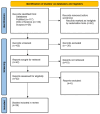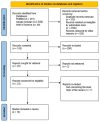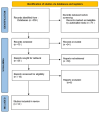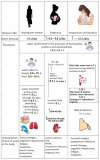The Prospective Applications of Bioelectrical Impedance Analysis in Postpartum Women
- PMID: 40004657
- PMCID: PMC11856150
- DOI: 10.3390/jcm14041126
The Prospective Applications of Bioelectrical Impedance Analysis in Postpartum Women
Abstract
Bioelectrical impedance analysis (BIA) has a wide range of applications. For over 25 years, it has primarily been utilized for assessing body composition. This method is non-invasive, portable, widely available, cost-effective, and user-friendly, offering the advantage of repeatability and minimal dependence on patient cooperation. BIA measures the impedance of the whole body, specifically the body's resistance to alternating current. In postpartum women, who undergo significant physiological changes following childbirth, BIA can serve as a valuable diagnostic and monitoring tool. It is commonly employed to track body weight and fat reduction, and it facilitates the differentiation of fat mass, muscle mass, and body water content. This enables the customization of nutritional plans and the development of individualized training regimens tailored to the patient's health status. Additionally, BIA aids in the assessment of hydration status, which is particularly critical during the postpartum period when women often experience fluid retention. Furthermore, optimal hydration is essential for lactation and maintaining favorable conditions for breastfeeding. BIA is also invaluable for evaluating nutritional status, micronutrient balance, and preventing both overweight and malnutrition. Moreover, BIA supports physical recovery by monitoring muscle mass, thereby assisting in the assessment of pelvic floor muscle regeneration following childbirth.
Keywords: bioelectrical impedance; body composition; breastfeeding; hydration; postpartum; puerperium.
Conflict of interest statement
The authors declare no conflicts of interest.
Figures






References
-
- Kitzinger S. The Fourth Trimester? Midwife Health Visit. Community Nurse. 1975;11:118–121. - PubMed
Publication types
Grants and funding
LinkOut - more resources
Full Text Sources

